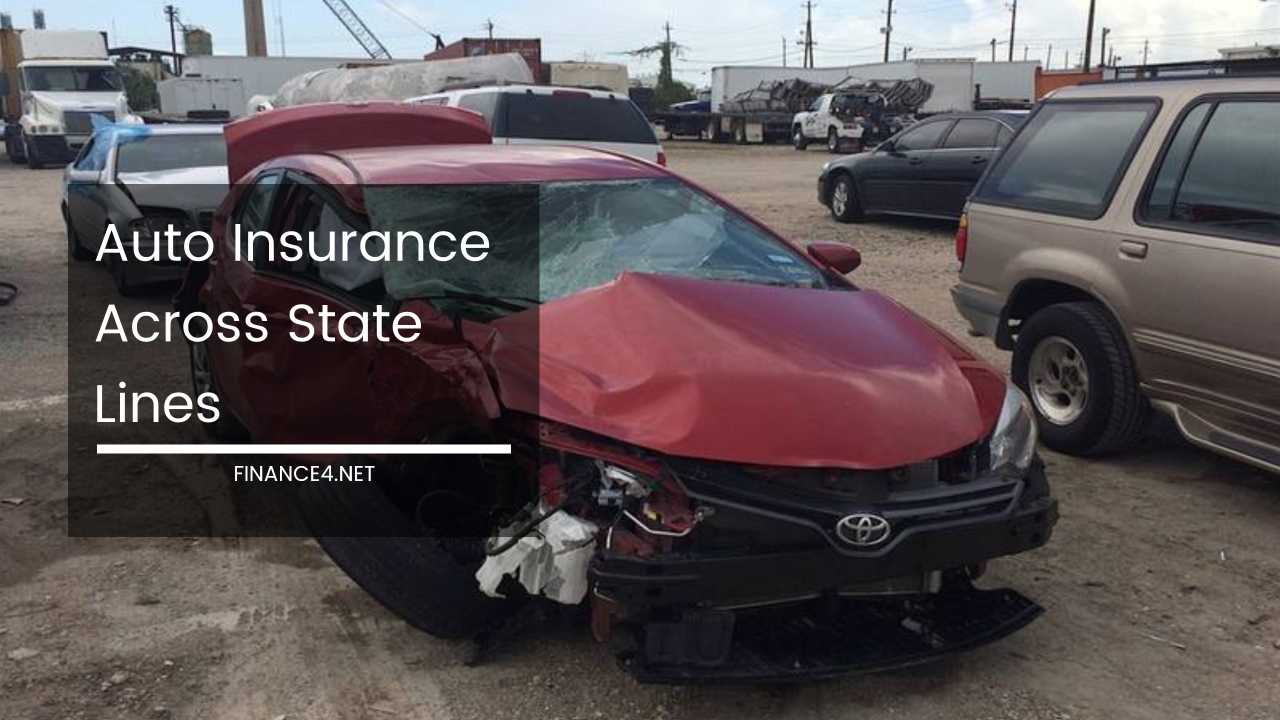Travel with Confidence: Car Insurance Across State Lines

Cruising Confidently: A Comprehensive Guide to Auto Insurance Across State Lines
The open road beckons, but before you embark on that exciting out-of-state adventure, ensure you have the proper insurance coverage.
While car insurance is a constant companion for any driver, navigating its intricacies across state lines can introduce a few twists and turns.
Fear not, intrepid traveler! This comprehensive guide equips you with the knowledge to ensure smooth sailing, regardless of where your journey takes you.
Understanding the Broadening Clause: Your Nationwide Safety Net
Most standard car insurance policies come with a built-in safety feature called the “broadening clause.” This clause essentially acts like a chameleon, adapting your coverage to meet the minimum liability requirements of the state you’re currently driving in. Here’s a closer look at how it works:
- Minimum Liability Coverage: Every state mandates minimum car insurance limits for bodily injury and property damage. These minimums can vary significantly, ranging from $25,000/$50,000/$25,000 (bodily injury/property damage) in some states to $50,000/$100,000/$25,000 in others.
- The Broadening Clause in Action: Let’s say your home state requires a hefty $50,000/$100,000/$25,000 in coverage, while the state you’re visiting mandates a minimum of $25,000/$50,000/$25,000. In this scenario, the broadening clause ensures you still have $50,000/$100,000/$25,000 worth of coverage, even though you’re in a state with lower minimums.
- Supplementing Coverage: Conversely, if your home state has lower minimums, the broadening clause might automatically bump up your coverage to meet the new state’s requirements. This ensures you comply with the law and are adequately protected.
Remember: The broadening clause applies to liability coverage only. Collision and comprehensive coverage, which protect your own vehicle in case of accidents or theft, remain exactly as outlined in your policy, regardless of location.
Beyond the Basics: Important Considerations for Out-of-State Drivers
While the broadening clause offers a layer of security, there are some key factors to keep in mind when venturing out of state:
- Temporary vs. Permanent: The broadening clause is intended for temporary travel, not permanent relocation. If you move to a new state and establish residency there, you’ll need to update your insurance to comply with that state’s requirements. This typically involves registering your car in the new state and obtaining insurance that meets its minimums.
- Double-Check Your Policy: Don’t rely solely on assumptions. Take the time to review your policy documents or contact your insurance provider directly to confirm coverage specifics and any limitations that might apply. This proactive approach can save you headaches down the road.
- Unfamiliar Territory? Ask Questions: If you’re unsure about anything related to your coverage or state-specific requirements, don’t hesitate to reach out to your insurance agent. They are there to answer your questions and ensure you have the peace of mind you deserve.
When Out-of-State Insurance Gets Interesting: Navigating Complexities
There are a few situations where out-of-state car insurance can get a bit trickier:
- College Students: If your child attends college out of state but keeps their car registered at your home address, they might still be covered under your policy, thanks to the broadening clause. However, different insurance companies might have varying guidelines for student drivers residing out-of-state. It’s crucial to discuss this scenario with your insurer and potentially add your child as a named driver on your policy if necessary.
- Military on the Move: Active military members stationed out of state often maintain their home state registration and insurance. This can generally work as long as they keep their insurance provider updated on their deployment location. However, it’s always best to consult with your insurance company to ensure everything is in order and discuss any potential coverage gaps.
- Multiple Residences: If you own a car and split your time between two different states, things can get more complex. You might need to register the car and obtain insurance in one state, or explore options for non-owner insurance in the other, depending on your specific circumstances. Discussing this scenario with your insurance agent is crucial to ensure proper coverage and avoid any registration or insurance violations.
Safe Travels: Essential Tips for Out-of-State Drivers
By following these tips, you can ensure a smooth and secure journey across state lines:
- Inform Your Insurance Company: If you’re planning an extended trip out of state (especially for more than a month), notify your insurance provider beforehand. This simple step ensures there are no unexpected coverage gaps or limitations due to the extended duration of your trip.
-
Review and Reassess: Take a moment to understand your policy’s coverage limits, particularly for liability, collision, and comprehensive. Consider if these limits are sufficient for your needs, especially if you’ll be driving in a state with significantly higher minimum requirements. For instance, if your home state mandates $25,000/$50,000/$25,000 in minimum coverage but you’ll be traveling to a state requiring $100,000/$300,000/$50,000, you might want to consider increasing your coverage limits to ensure you have adequate protection in case of an accident.
-
Consider Additional Coverage: Depending on your risk tolerance, the value of your car, and the distance you’ll be traveling, you might want to explore additional coverage options. Here are a few to consider:
- Roadside Assistance: This coverage can be a lifesaver if you experience a flat tire, dead battery, or other car trouble on the road.
- Rental Car Reimbursement: If your car is damaged in an accident and requires repairs, this coverage can help offset the cost of renting a car while yours is being fixed.
- Uninsured/Underinsured Motorist Coverage: This protects you in case you’re involved in an accident with a driver who either has no insurance or not enough insurance to cover the damages.
-
Carry Proof of Insurance: While most insurance companies offer digital proof of insurance through their mobile apps, it’s never a bad idea to have a physical copy handy, especially when traveling to unfamiliar territories. A printed copy can be helpful in case of an accident or if you’re pulled over by law enforcement.
-
Be Aware of State-Specific Laws: Traffic laws and regulations can vary from state to state. Familiarize yourself with the specific laws of the state(s) you’ll be visiting, such as speed limits, hands-free driving requirements, and right-of-way rules.
By following these steps and understanding how your car insurance works across state lines, you can venture out with confidence, knowing you’re prepared for the unexpected. So, buckle up, hit the gas, and enjoy the ride!
Additional Resources:
- Your State’s Department of Motor Vehicles (DMV) website: Most state DMVs offer resources and information on car insurance requirements and driving regulations.
- National Association of Insurance Commissioners (NAIC): https://content.naic.org/
- Insurance Institute for Highway Safety (IIHS): https://www.iihs.org/



